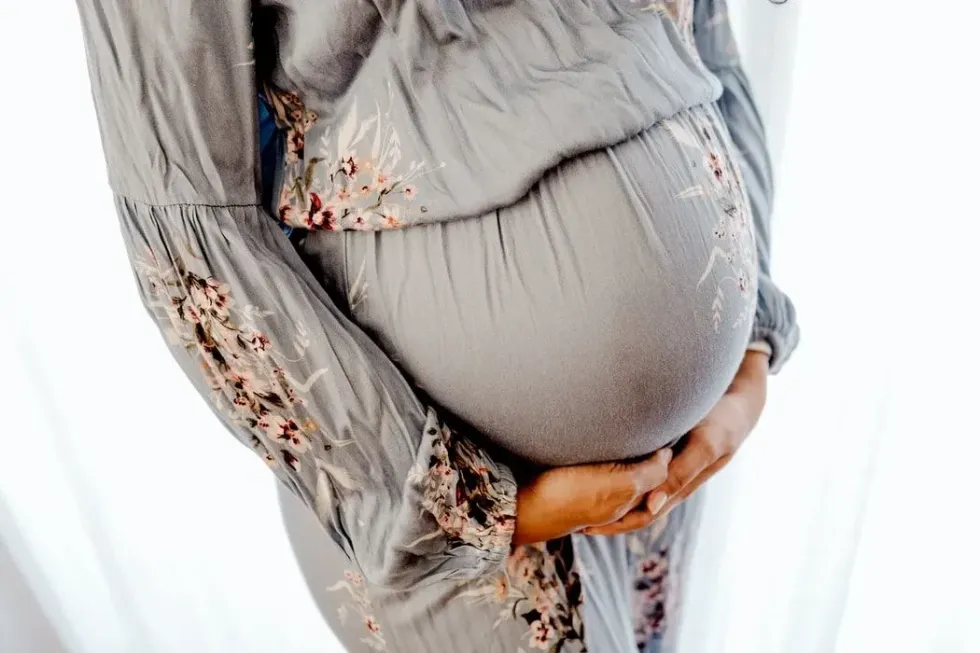Nearly nine months have gone by: you're in your final trimester of pregnancy and getting ready for that due date to bring your baby into the world!
It's such an exciting time, but it can also bring plenty of worries and concerns along with it. Whether you're a ball of nerves or you just can't wait to meet baby, Kidadl is here to help.
If you're looking for advice with 37 weeks pregnant period pains on and off or preparing for when your newborn arrives with our guide to 2-week-old baby milestones, Kidadl are here to bring you all the advice, information and support you and your family need at every stage of your parenting journey with your baby and beyond.
And if you're 36 weeks pregnant and preparing for a final trimester ultrasound, or if you're just curious and want to find out more, this article will tell you everything you need to know.
From why you would need an ultrasound at 36 weeks, a closer look at issues such as fetal growth and movement and what baby's position for birth really means, to what happens at the scan and beyond, Kidadl are getting you prepared ahead of the big day.
Before Your 36 Week Ultrasound
An ultrasound isn't given to all expectant women at 36 weeks pregnant, as part of standard midwifery care. However, your doctor or midwife may recommend a third trimester scan for a number of different reasons.
The position of your baby is one reason. If your baby has previously been in the breech position (feet down in the pelvis), they will often move around naturally by about 36 weeks.
However, some babies stay in the breech position, which means you need a little extra consideration when it comes to your birth plan. An ultrasound will help to determine exactly what position your baby is in, which will give you the information you need to inform the next steps towards delivery.
The size of your baby is another main reason for a third trimester ultrasound at 36 weeks pregnant. By 36 weeks, your baby should be roughly the size of a papaya or a bunch of kale, measuring between 18 and 19 inches from head to heel and weighing nearly 6 lb.
If your midwife or doctor believe that your baby is smaller than expected for your number of weeks pregnant, or that they are "small for gestational age", an ultrasound will help to get a clearer picture.
It might be that your baby is the right size, but was lying in an uncomfortable position that hindered accurate measurement. Or your baby may be an average size, but lower in weight.
If your baby is smaller than expected, an ultrasound can help to determine if there are any other factors at play, for example, decreased blood flow or oxygen supply to the uterus, excess amniotic fluid, or an infection.
If your baby is larger than expected for your number of weeks pregnant, or "large for gestational age", it isn't usually a cause for concern, especially if this isn't your first baby as subsequent pregnancies often result in heavier weight babies.
Your doctor may decide to carry out a test to check for gestational diabetes if your baby's weight or size is significantly larger than expected, as this could present some risks to you or your baby in the final weeks of your pregnancy or during labor and birth.
Reduced fetal movements are another key reason for a third trimester ultrasound at 36 weeks pregnant. Although there is no set number of normal movements, by 36 weeks you should have a good understanding of your baby's routine and pattern of movements.
You'll likely notice a distinct wake and sleep pattern, notice them respond to things like your voice or touch, or even feel them move when you have a hot or cold drink!
If you feel that your baby's movements have changed, slowed down, or stopped, contact your doctor or midwife. They may examine you personally and check for a strong heartbeat, or refer you directly for an ultrasound.
Reduced fetal movements do not necessarily mean that there is an issue with your baby.
Things like an anterior placenta are totally normal but may cause reduced movements, or perception of movement. And, because you're so far along in your pregnancy, it's possible you've got so used to the movement of baby, that you've stopped noticing it!
You will also get extra ultrasounds and checkups if you have a high-risk pregnancy, but if you are at a higher risk, this is likely to have been identified before week 36.
Whatever the reason for your third trimester ultrasound, you are likely to be feeling a little worried or anxious. Of course, that's perfectly natural and you most likely have nothing to worry about.
But if an issue is identified, it will mean that you and your care team are informed and equipped to make the right decisions to deal with the situation effectively.
If you have concerns, talk to your midwife or doctor. They will answer any questions you might have, provide any necessary resources and talk you through the procedure.
Or, reach out to friends, family, or members of your antenatal classes who have been, or might be going through, something similar. Also, try to avoid doing too much research online; it's easy to give yourself the worst-case scenario, which will mean a lot of unnecessary stress for you.
Before your third trimester ultrasound, the most important thing you can do is to (try your best to!) relax. Look after your mental and physical health, with lots of sleep, healthy food, and self-care practices, whether that's warm bubble baths or meditation, to keep your stress levels down.

During The 36 Week Ultrasound
Your third trimester ultrasound will follow exactly the same procedure as your previous routine scans. At the hospital, you'll be asked to lie down on your back in a dimly lit examination room and expose your (by now probably quite large!)
belly. The sonographer will smear on some cold, ultrasound gel and run the probe over your belly so they can get a clear picture of your baby.
The sonographer will carefully examine your baby's body and pay close attention to any areas that may have been referenced in your referral, like fetal growth, heartbeat, breech position, or blood flow. The sonographer might talk you through what they're seeing, or wait until they have a clearer picture.
The ultrasound is likely to take around 20 to 30 minutes. Remember that your birth partner or other chosen friend or family member can accompany you to the hospital and to your ultrasound appointment. You might even be lucky enough to come home with some 36 week ultrasound pictures!
You can ask your sonographer any questions you might have, for example, if baby is hitting the correct growth measurements or what position baby is in and how that will impact labor and birth.
After your ultrasound, you may also have an appointment to see your doctor or midwife and this is a great opportunity to ask any general pregnancy and baby questions you have as well, not just those relating to your ultrasound.
You might want to ask about early signs of labor in pregnancy, such as losing the mucus plug, waters breaking, or contractions.
Perhaps you'd like to know about labor itself, for example, any medicine or pain relief that you might be offered, how long labor will last, breathing exercises, or exactly what you can eat or drink.
You may have questions about the type of delivery you'll have, and what that means for the duration of your stay in hospital or recovery times.
Or even what you need to take with you to the hospital, if you haven't packed your bag yet.
Many women all of a sudden find themselves with a raft of questions to ask at 36 week ultrasound appointments that they hadn't thought of before, so don't be afraid to ask anything that comes to mind about your baby or pregnancy.
After The 36 Week Ultrasound

Following your ultrasound at 36 weeks, if your baby is still in the breech position with his or her feet down, your midwife or doctor may decide to attempt to move the baby from breech position into the correct position for birth with a technique called ECV (External Cephalic Version).
This is done externally and, although it is uncomfortable, it shouldn't be painful or pose any risk to you or your baby.
If the ECV is unsuccessful, or if you'd prefer not to have this procedure, you can discuss moving forward with a breech vaginal birth, if it is deemed safe, or choosing a Caesarian birth instead.
Although sonographers are highly trained and the equipment they use is specialized, the 36 week ultrasound weight accuracy still may not be completely correct.
The 36 week ultrasound weight estimate and percentile, as well as the size measurements, are exactly that: estimates. There is a margin of error, for simple reasons like baby being in a difficult position meaning the sonographer wasn't able to see him or her clearly.
So if baby's growth is measuring a little under or over at week 36, it's most often not reflective of a health issue.
If an issue is detected with your little one's health at 36 weeks, another test or further health scans may be ordered in order to find out more. Try not to make any assumptions until you've spoken in more detail with your healthcare team.
After your trip to the hospital at 36 weeks, you're sure to have earned some rest and relaxation. So make sure to indulge in some of your favorite things, whether that's a pregnancy massage, a good book in bed, or a gentle swim.
You also need to gather your strength for what the rest of the final trimester of your pregnancy will bring! At 36 weeks, you might have already noticed your baby drop, as their head moves down into your pelvis ready for birth.
However, this, combined with increased flexibility in your pelvic bones (to help let baby out! ), is likely to lead to pelvic pain in your final month of pregnancy. A belly sling, some special exercises, or warm baths can all help with pain relief.
By week 36, it's also totally normal to experience excess gas, bloating, constipation, even more frequent urination, and even blood-streaked vaginal discharge.
But remember that too much blood could indicate a problem, and clear discharge could actually be your waters breaking, so do pay attention to anything that is out of the ordinary in these last few days and months.
Some women might also start to experience insomnia and swelling in the ankles and feet, so if this is the case for you, make sure you're laying down with your feet up and getting extra rest whenever you can.
Meanwhile, other women may have an extra energy burst as the instinct to nest kicks in as the due date draws near!
But, if this is true for you, don't let that extra energy fool you: you need to rest, sleep and eat just as much in this final month of pregnancy before you meet your baby.
If you found this article helpful, then why not take a look at the milestones a 3-week-old baby will reach or our sample 2-month-old schedules?










